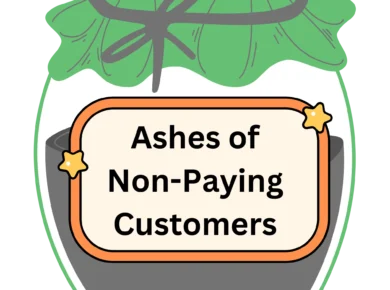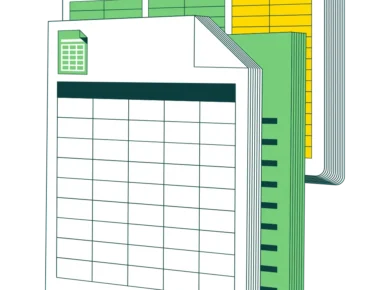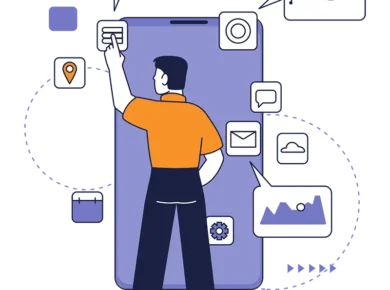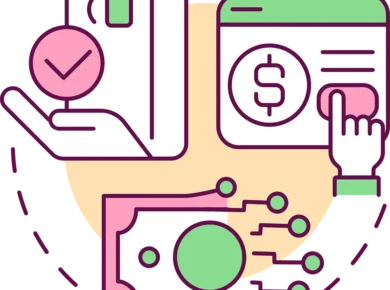Introduction
Clarity at the start of a project can mean the difference between success and failure. However, freelancers often grapple with projects with vague requirements, leading to misunderstandings, scope creep, and strained client relationships.
In this article we explore the importance of clear project scope and deliverables, offering a comprehensive guide to avoiding common pitfalls and ensuring project success.
Understanding Project Scope and Deliverables
Definition of Project Scope
Project scope refers to the detailed outline of all aspects of a project, including its goals, deadlines, deliverables, tasks, features, and functions. Project scope should also define what is excluded from the final product. In freelancing, project scope acts as your blueprint for the work you’ll complete. It establishes the boundaries and expectations for your project, guiding both you and your client on what will be delivered, the resources needed, and the timeline for completion.
Definition of Deliverables
The deliverables are the products, services, reports, and any other tangible or intangible outcomes that the client can expect to receive according to the project scope. In freelance projects, deliverables might include completed designs, written content, software applications, or reports. These are the specific outcomes that the client expects to receive, which you agreed upon at the start of the project. Deliverables are often used as milestones to measure the progress of a project and are critical for assessing whether the project’s goals have been met.
Benefits of having a clear project scope and deliverables
A clearly defined project scope and deliverables benefit both you and your clients.
For You
- Clear focus and understanding of the project’s boundaries
- A basis for accurate time and resource estimations
- A tool for managing client expectations
- A tool for clearly justifying project costs
For Your Clients
- A detailed project overview for approval before engagement
- A mechanism for accountability
- A means of fixing the project’s timeframe
- A structured plan for the project’s execution
- A clear understanding of all the work you put into the project
Steps to Define a Clear Project Scope
Gathering the Right Information
- Initial Consultation: Begin the project by having a detailed discussion with the client. This is the crucial moment when you work together to define a clear scope matching your goals.
- Asking the Right Questions: Ask questions that uncover all aspects of the project. Use a mix of open-ended and clarifying questions to dig deep and gather the necessary details for a successful assignment.
Identifying Specific Goals
- Collaborative Definition: The process involves working closely with your client to identify and define clear objectives and key results that align with the project’s goals. By engaging in open communication and shared decision-making, both you and your client can ensure a mutual understanding of the intended outcomes and the steps needed to achieve them effectively.
- SMART Goals: To enhance goal-setting effectiveness, it is crucial to establish Specific, Measurable, Achievable, Relevant, and Time-bound (SMART) goals. By adhering to these criteria, individuals and teams can create actionable and focused goals that contribute to overall success and progress within the set timeframe.
Outlining Project Scope Details
- Task Breakdown: To effectively manage the project, break it down into smaller, manageable tasks or phases. This approach helps organize the workflow, set clear milestones, and ensure a systematic progression towards project completion.
- Deadlines and Milestones: Setting clear deadlines for each project phase is crucial to ensure timely progress. Additionally, establishing initial milestones can help track and celebrate achievements.
- Resource Planning: Start by outlining the specific resources required for your project. Consider software tools, physical materials, equipment, and any other essential elements vital for the successful completion of the project. This detailed resource assessment will pave the way for a smooth and efficient project execution.
Setting Clear Deliverables
Understanding Client Expectations
Regular Check-ins: Maintain open and transparent communication channels with the client throughout the project. Doing so can align your deliverables closely with the client’s vision and expectations, fostering a more robust partnership and ensuring project success.
Client Involvement: Incorporating client feedback through showcasing partial work or prototypes can effectively elucidate expectations at an early stage. This practice fosters transparency and enhances collaboration, leading to a more refined end product.
Identify Specific Goals and KPIs: Work with the client to define specific, measurable goals and key performance indicators (KPIs) for the project. This process aids the project’s success and guarantees that you and your client share a common understanding of what success entails.
Understand the Client’s Business and Industry: Gain a deep understanding of the client’s business, industry, and challenges. This knowledge allows you to tailor your approach and deliver truly impactful solutions.
Acknowledge the Client’s Budget Constraints: Discuss and understand the budgetary constraints early in the project planning phase. This helps set realistic expectations and plan the project scope accordingly.
Post-Project Support and Follow-Up: Discuss the level of support and follow-up the client expects after the project’s completion. Whether training, maintenance, or periodic check-ins, understanding these expectations allows for better planning and client satisfaction.
Explore the Client’s Vision for the Project: Beyond immediate goals, understand the client’s long-term vision for the project and how it fits into their broader business strategy. This ensures that your work contributes to their long-term success.
Feedback Mechanisms: Agree on mechanisms for providing and receiving feedback throughout the project. Constructive feedback loops help make necessary adjustments and continuously improve the quality of the deliverables.
Defining Quality and Success Criteria
Quality Standards: When defining the expected standard for deliverables, it’s crucial to outline specific criteria and benchmarks for success. This ensures clarity and sets the foundation for a quality-driven approach. You can implement regular quality checks, feedback loops, and continuous improvement processes to guarantee these standards are met.
Measurable Success: Determining measurable success involves identifying specific benchmarks that clearly indicate the successful completion of a project or task. These benchmarks serve as quantifiable criteria against which progress and achievement can be assessed.
Examples of Defining Quality and Success Criteria
Quality Standards:
- For a Web Development Project: Quality standards might include site loading speed (e.g., under 2 seconds), mobile responsiveness, and adherence to web accessibility guidelines. Regular testing phases, client reviews, and revisions based on feedback ensure these standards are met.
- For Graphic Design Deliverables: Quality standards could involve resolution specifications, color accuracy, and alignment with the brand’s visual guidelines. Implementing stages of draft reviews and incorporating feedback loops can maintain these standards.
- For Written Content: Standards might include criteria for tone of voice, readability scores (e.g., Flesch Reading Ease above 60), and zero tolerance for plagiarism. Using tools for grammar and plagiarism checks and revising content based on client or editor feedback can help meet these standards.
Measurable Success Criteria:
- Increase in Website Traffic: A digital marketing project’s success could be measured by a 20% increase in website traffic within three months of the campaign launch, using analytics tools to track progress.
- User Engagement Metrics: For a mobile app development project, success criteria could include specific targets for daily active users (DAU) or user retention rates monitored through in-app analytics.
- Sales Growth: For an e-commerce platform redesign, measurable success might be defined as a 15% growth in sales and a 25% increase in customer retention rates within the first six months post-launch.
Documenting Deliverables
You can enhance project organization, clarity, and accountability by meticulously documenting deliverables and incorporating detailed timelines. This process helps manage client expectations and establish a professional and reliable working relationship.
Documentation: Create a Detailed Document or Checklist
- What to Include: Your documentation should list each deliverable associated with the project. For each item, include a brief description, the criteria for acceptance, and any relevant details that define the scope and quality standards. This might cover everything from the format and medium of the deliverable (e.g., a digital file, a written report, a physical product) to specific technical requirements (e.g., resolution for digital designs and word count for written content).
- Purpose: This document acts as a roadmap for the project, ensuring that you and your client clearly understand what outcomes are expected. It helps set clear goals, manage client expectations, and provide a basis for project evaluations.
- How to Create It: List the deliverables using project management software tools, spreadsheets, or a simple document. Make this document accessible to your client, allowing easy updates and reference throughout the project.
Incorporating Timelines: Set Deadlines and Completion Dates for Each Deliverable
- Timeline Development: For each deliverable listed in your document, assign a realistic deadline considering your workload, any dependencies (tasks that must be completed before others can start), and the client’s timeline. If necessary, break down larger deliverables into smaller tasks, assigning deadlines to each to manage progress effectively.
- Importance of Deadlines: Deadlines help pace the work and ensure the project progresses steadily toward completion. They are crucial for time management, especially in projects with multiple deliverables or phases. Deadlines also give clients visibility into the project’s progress and when they can expect to review or receive completed work.
- Communication and Flexibility: Communicate the proposed timelines to your client for agreement. Be prepared to adjust these deadlines if project requirements change or unforeseen challenges arise.
- Monitoring Progress: Use the established timelines to track your advancement by the planned schedule. Consistently inform the client about your progress, particularly highlighting any setbacks, to keep expectations in check and open the door for swift resolution of any emerging challenges.
Conclusion
Defining project scope and deliverables is beneficial and imperative for your success as a freelancer. By following these strategies, you can set solid foundations for your projects.
Start applying these best practices in your projects today! Keep improving as a project manager to excel. Effective communication and documentation are key to successfully managing any project, big or small.
Have you used any of these strategies in your freelance work? How did they impact your projects? Share your experiences in the comments to help each other grow as project managers. Constant learning is essential for success.
Stay tuned for more tips on project management, productivity, and freelancing. Follow us to stay updated!
Happy freelancing!






